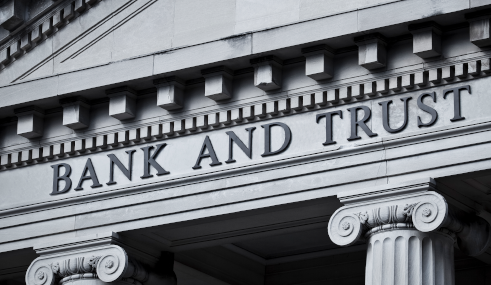by Jurrien Timmer, Director of Global Macro, Fidelity Investments
The closure is unlikely to trigger a crisis, but may have other impacts.
Key takeaways
- Regulators have put new measures in recent days to help ensure that the Silicon Valley Bank (SVB) closure doesn't escalate into a broader banking crisis.
- However, what happened at SVB is indicative of a more widespread mismatch between bank assets and liabilities, which could have implications for bank profit margins.
- It's too soon to tell if the events of the past week will influence the trajectory of the Fed's rate-hiking cycle.
News has been breaking fast in recent days in the aftermath of the closures of Silicon Valley Bank (SVB) and Signature Bank. While the news cycle has been moving quickly and markets are still adjusting, here is an initial look at what has happened so far, and what it may mean for markets.
What happened at SVB
In very simple terms, SVB experienced massive deposit growth over the past few years. This was at least in part driven by a boom in venture capital. It invested a chunk of these deposits in long-dated bonds, at a time when yields were at generational lows.
As interest rates rose, the prices of those long-dated bonds fell (bond prices move inversely to interest rates), creating substantial investment losses for SVB. After SVB announced that it had lost $1.8 billion in asset sales, the bank attempted to raise additional investment capital last week, but was unable to. Many customers then rapidly withdrew deposits, and finally the bank was seized by regulators on Friday.
Once the dust has settled, we can discuss the causes of the SVB episode. But for now, the more pressing questions are: Could the events of the past week have the potential to escalate to a systemic event, such as a large-scale banking crisis? Even if not, could there be other impacts for the financial sector? And what might this episode mean for the Fed's rate-hiking cycle?
Here is my opinion, at this initial stage, on those questions.
This is unlikely to escalate into a systemic bank crisis
The US's primary safeguard against bank runs is, of course, FDIC insurance. FDIC standard insurance covers up to $250,000 per depositor, per bank, per account ownership category. While there was initially a lack of clarity over what might happen to SVB depositors holding more than that amount at the bank, the Fed, FDIC, and Treasury issued a joint statement over the weekend confirming that depositors would have access to all their money starting Monday.
Another weekend announcement from regulators was the creation of the Bank Term Funding Program, or BTFP, to serve as an additional backstop. The BTFP will lend money to banks that need cash to meet deposit withdrawals, and let banks use some types of bonds and debt assets as collateral for those loans (with the intention of helping to prevent repeat occurrences of what happened at SVB—so that banks don't need to sell bonds at losses in order to meet withdrawals).
In my opinion, these measures should help reduce any risk that the incident triggers a systemic event.
But further, it's important to remember that this has been primarily a liquidity event (i.e., there were insufficient liquid assets on hand to meet immediate cash demands), rather than a solvency crisis (such as one in which a bank simply has insufficient equity relative to its debt). The financial crisis in 2008 was both, and the regulation that followed has left the banking sector in a much stronger position.
Yet, there could be broader implications for the financial sector
At the same time, this episode does bring to light the fact that banks have been paying depositors much less than competing short-term vehicles do. This typically happens during tightening cycles, but the spread is particularly large now—with banks generally paying about 0.5% on deposits right now, compared with a 4.5% average money-market yield.
After the events of the past week, banks may now have to start competing for those deposits, by paying higher rates. But paying higher rates on deposits could eat into net interest margins (the difference between what banks earn on the loans they make and pay on the deposits they hold), impacting the overall profitability of the financial sector. Even if they don't start offering higher rates on deposits, any banks that use the new BTFP lending facility will have to pay a rate significantly higher than current deposit rates.
So, even though SVB is unlikely to lead to a systemic crisis, it seems that there could indeed be some lasting repercussions for the financial sector.
Potential implications for the Fed's rate-hike cycle
There's an old adage that says during Fed tightening cycles, the Fed usually keeps raising rates until something "breaks." In 2007 it was subprime mortgages, in 1998 it was Long-Term Capital Management, and so on.
In my view, the key question right now is whether the collapse of SVB and the creation of the BTFP mark the "breaking point" for this Fed cycle. Because if so, it has implications for the valuation of all assets, including stocks.
What happened at SVB speaks to the overall asset-liability mismatch that is now happening for many institutions. Banks generally borrow at the short-term end of the yield curve (i.e., with deposits), and lend at the long-term end of the yield curve (i.e., with bonds and mortgages). Under normal conditions, short-term rates are lower than long-term rates, and so banks keep the difference between the short-term rates they pay and long-term rates they earn.
But currently the yield curve is "inverted," with short-term rates significantly higher than long-term rates. This inversion is, essentially, a by-product of the Fed's rate-hike cycle. And it's also led to the mismatch experienced by SVB and other institutions.
And herein lies the dilemma that the Fed faces. On the one hand, inflation remains too high and unemployment is at multi-decade lows—which suggests more rate hikes. But now, the Fed needs to create a liquidity backstop to solve a problem that is the very by-product of this rate-hike cycle.
I'm inclined to think that if the SVB saga fades into the background, then the Fed will resume its hawkish posturing. But if SVB is actually a shot across the bow that the Fed is going too far, then it will be a moment of truth for the Fed and for this market cycle. In that case, the Fed might have to choose between financial stability and containing inflation expectations.
*****
About the expert

Jurrien Timmer is the director of global macro in Fidelity's Global Asset Allocation Division, specializing in global macro strategy and active asset allocation. He joined Fidelity in 1995 as a technical research analyst.
















